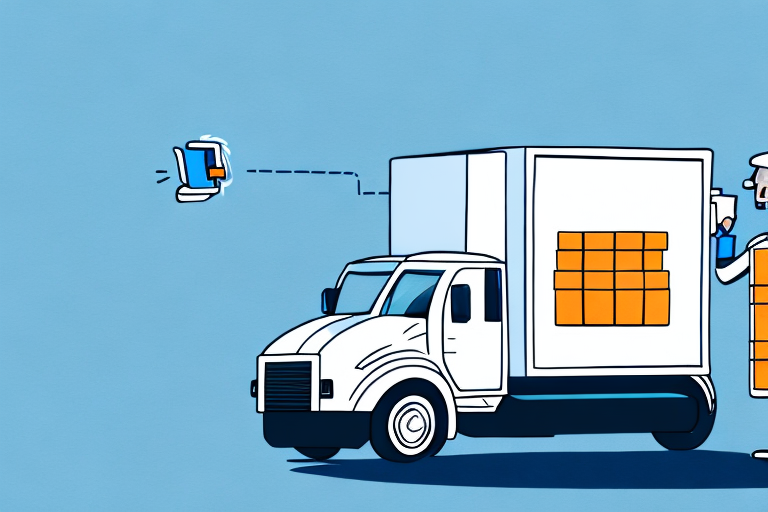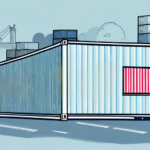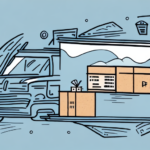What Is POD in Logistics? Exploring the Basics of Proof of Delivery
If you’ve ever received a package from a courier or delivery service, chances are you’ve signed a document called a Proof of Delivery, or POD. POD is a crucial document in the logistics industry, which helps to provide evidence of successful delivery of goods to the recipient. But its importance goes far beyond just confirming the receipt of goods. In this article, we’ll explore the basics of Proof of Delivery (POD) and how it plays a vital role in logistics and supply chain management.
Understanding the Importance of Proof of Delivery in Logistics
POD is a document that acknowledges the receipt of goods by the recipient. The POD plays a vital role in logistics, as it validates the delivery of the goods. This document helps to ensure accountability, and acts as evidence in case of disputes or claims.
One of the key benefits of having a POD is that it helps to improve customer satisfaction. When customers receive their goods, they want to be sure that they have received the correct items and that they are in good condition. By providing a POD, logistics companies can give customers peace of mind and build trust with them.
Another advantage of having a POD is that it can help to streamline the logistics process. With a POD, logistics companies can track the delivery of goods more efficiently and accurately. This can help to reduce errors and delays, and ultimately improve the overall efficiency of the logistics operation.
How Proof of Delivery Helps to Ensure Accurate Deliveries
One of the primary purposes of POD is to ensure that the delivered goods are accurate and complete. Before signing the proof of delivery document, the recipient verifies the quantity and quality of the goods delivered. This step helps to eliminate any discrepancies or errors that might have occurred during the transportation of goods from the seller to the recipient.
Another benefit of using proof of delivery is that it provides a record of the delivery process. This record can be used to track the delivery status of the goods and to identify any issues that may have occurred during the delivery process. This information can be used to improve the delivery process and to ensure that future deliveries are more efficient and effective.
Proof of delivery can also be used as evidence in legal disputes. If there is a dispute between the seller and the recipient regarding the delivery of goods, the proof of delivery document can be used as evidence to support the claims of either party. This can help to resolve disputes quickly and efficiently, without the need for lengthy legal proceedings.
POD and the Role of Technology in Logistics Management
With the introduction of technology, the POD process has become more efficient and accurate. Today, many companies use digital devices, such as smartphones or tablets, to collect and store delivery data, including signatures, GPS locations, and timestamps. This data can then be used to track and monitor the shipment’s progress in real-time.
In addition to improving the POD process, technology has also revolutionized other aspects of logistics management. For example, the use of automated warehouses and robotic systems has significantly increased the speed and accuracy of order fulfillment. These systems can quickly locate and retrieve products, reducing the time it takes to process and ship orders.
Furthermore, technology has enabled logistics managers to optimize their supply chain operations. By analyzing data on inventory levels, transportation costs, and delivery times, managers can identify areas for improvement and make data-driven decisions. This can lead to cost savings, improved customer satisfaction, and a more efficient overall logistics process.
The Benefits of Using Electronic Proof of Delivery (ePOD) Systems
Electronic proof of delivery (ePOD) systems have revolutionized the logistics industry. These systems provide benefits such as real-time tracking, reduced paperwork, improved data accuracy, and increased automation, which translates to faster turnaround times and more efficient deliveries.
In addition to these benefits, ePOD systems also offer enhanced customer service. With real-time tracking, customers can receive updates on the status of their deliveries, including estimated delivery times and any delays. This level of transparency and communication can improve customer satisfaction and loyalty.
Different Types of POD Methods Used in Logistics and Supply Chain Management
The traditional POD method involves a paper-based system, where the recipient signs a physical document, and the carrier returns it to the sender as proof of delivery. However, with modern technology, there are various new methods of POD, including digital signatures, RFID tags, and barcode scanning.
One of the most popular new methods of POD is the use of mobile devices. With the widespread use of smartphones and tablets, carriers can now capture signatures and other delivery information electronically, and transmit it back to the sender in real-time. This not only saves time and reduces errors, but it also provides greater visibility into the delivery process, allowing for better tracking and management of shipments.
How to Create an Effective Proof of Delivery Process for Your Business
Creating an effective proof of delivery process involves a combination of people, technology, and culture. Choosing the proper tools, trainings and integrating it into your logistics system plays an essential part in executing successful POD. In this aspect, it is important to develop a process that aligns and adapts to your organization’s specific needs and requirements while considering the technological trends in the logistics industry.
One important factor to consider when creating a proof of delivery process is the level of automation that can be implemented. Automating certain aspects of the process, such as data entry and tracking, can greatly reduce the risk of errors and increase efficiency. Additionally, automation can provide real-time updates and alerts, allowing for quicker problem resolution and improved customer satisfaction.
Another key element to a successful proof of delivery process is communication. Clear communication between all parties involved, including drivers, dispatchers, and customers, is crucial for ensuring that deliveries are made on time and accurately. Utilizing technology such as GPS tracking and mobile devices can facilitate this communication and provide a more streamlined process.
The Legal and Regulatory Aspects of Proof of Delivery in Logistics Operations
POD is a crucial document, and various legal and regulatory frameworks are governing the use and validity concerning proof of delivery. The paper trails that may serve as important evidence in cases of unfortunate disputes; hence it is important to make sure that your POD process is legally compliant to avoid any legal repercussions.
One of the legal aspects of POD is the requirement for a signature from the recipient. This signature serves as proof that the goods were delivered to the correct person and location. However, with the rise of contactless delivery due to the COVID-19 pandemic, some countries have relaxed this requirement and allowed for alternative forms of proof, such as a photo of the delivered goods.
Another regulatory aspect of POD is the retention period for these documents. In some countries, logistics companies are required to keep PODs for a certain number of years for auditing and tax purposes. Failure to comply with these regulations can result in fines and legal consequences.
Common Challenges Faced during the POD Process and Ways to Overcome Them
Challenges encountered during the POD process include data inaccuracies, paperwork management, human errors, and fraud. These challenges can be mitigated with effective technology, streamlined processes, and strict controls to verify the authenticity of the data being presented.
Another common challenge faced during the POD process is the lack of communication between different parties involved in the process. This can lead to delays, misunderstandings, and errors. To overcome this challenge, it is important to establish clear communication channels and protocols, and to ensure that all parties involved are aware of their roles and responsibilities. Regular meetings and updates can also help to keep everyone on the same page and ensure that the process runs smoothly.
Real-world Examples: How Major Companies Use POD to Improve their Logistics Efficiency
Major companies, such as Amazon, FedEx, and UPS, have successfully implemented POD technology to reduce operational costs and increase efficiency. One of the ways they have done this is by using ePOD systems that provide real-time tracking and enhance customer experience while improving operational efficiency.
Another way that major companies are using POD technology is by implementing automated delivery systems. These systems use advanced algorithms and machine learning to optimize delivery routes, reduce delivery times, and minimize fuel consumption. For example, Amazon has been testing its Prime Air delivery drones, which can deliver packages to customers in under 30 minutes. This not only improves delivery times but also reduces the need for delivery trucks, which can help reduce traffic congestion and carbon emissions.
Future Trends in POD Technology and its Impact on Logistics Operations
POD technology is rapidly evolving, and it’s essential to stay ahead of the curve to remain competitive in the logistics industry. Future trends include machine learning algorithms that predict delivery arrival times, augmented reality devices that improve warehouse picking, and blockchain technology that enhances data security and transparency.
Another trend that is expected to impact logistics operations is the use of drones for last-mile delivery. With advancements in drone technology, it’s becoming more feasible to use drones for delivering packages to customers’ doorsteps. This could significantly reduce delivery times and costs, especially in urban areas where traffic congestion is a major issue. However, there are still regulatory and safety concerns that need to be addressed before widespread adoption of drone delivery can occur.
Choosing the Right POD Solution for Your Business: Factors to Consider
Selecting the right POD solution for your business involves identifying your organization’s needs, considering the associated costs, and critically analyzing the available technological solutions in the market. The right solution should meet your requirements while providing a competitive edge in terms of cost, efficiency, and quality.
One important factor to consider when choosing a POD solution is the level of integration it offers with your existing systems. A solution that seamlessly integrates with your ERP, WMS, and TMS can help streamline your operations and reduce manual data entry errors. Additionally, it can provide real-time visibility into your delivery process, allowing you to make informed decisions and quickly address any issues that arise.
Another factor to consider is the level of customer engagement that the solution provides. A solution that offers real-time tracking and delivery notifications can help improve customer satisfaction and loyalty. Additionally, it can provide valuable data on customer preferences and behavior, which can be used to improve your overall delivery strategy and drive business growth.




















